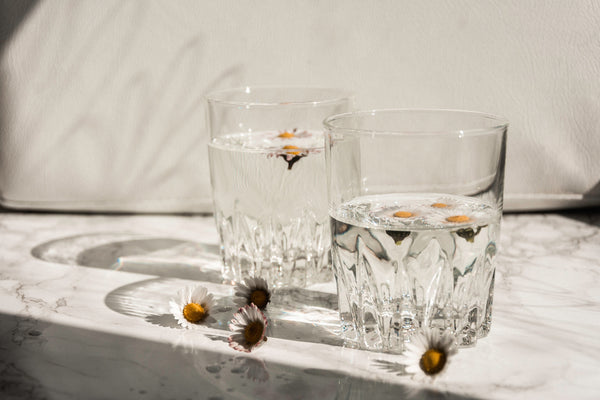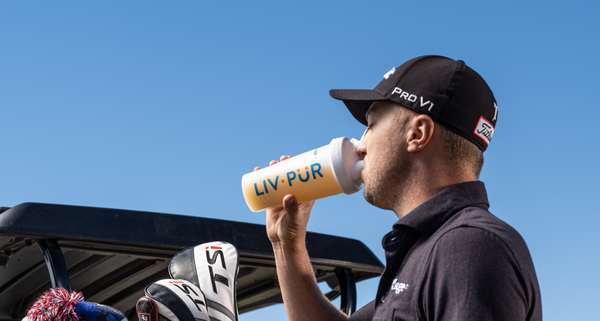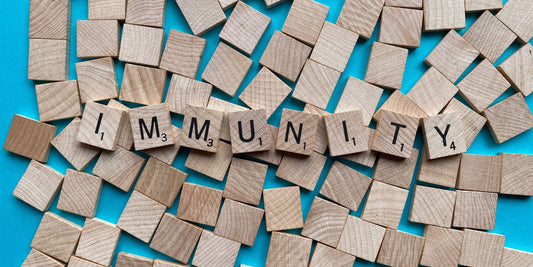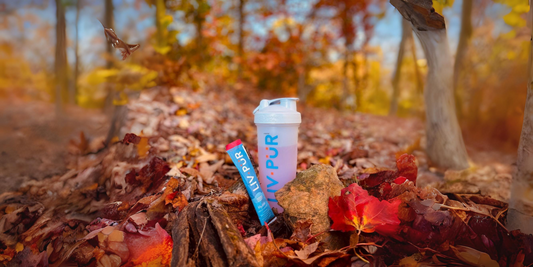Good health and hydration – you can’t have the former without the latter. Your organs, muscles, hormones, and more are all counting on you.
The trouble is, misinformation makes proper hydration more complicated than it should be. And with our busy lives, it’s not something we want to think about every hour of every day.
Today, we’re busting myths and sharing tips. Read carefully, and optimal hydration will become second nature.
Myth #1: If you drink eight glasses of water a day, you’ll be fine.
Eight glasses of water a day is a decent general guideline for many people – but does that actually include you? If staying hydrated is a struggle, personalize the mission.
For instance, that may not be enough water for a larger person who performs difficult labor, especially outside. For a small, sedentary person eating a balanced diet, it’s probably too much.
Always base fluid intake on your size, activity level, diet, and health status. This will improve hydration more than any general guideline ever could.
Myth #2: It’s difficult to become dehydrated.
Dehydration is no different from many other bodily conditions; it can be mild, or it can be severe. Just because you aren’t experiencing the more obvious symptoms does not mean you’re not dehydrated.
Fluid loss is constant, so always be replenishing. But in addition to water, you’re losing electrolytes. Electrolytes are minerals that show fluid where to go, so they’re just as essential to hydration as water itself.
Myth #3: Sports drinks are the same as hydration drinks.
Knowing that we need electrolytes for optimal hydration, it makes sense to reach for the widely available sports drinks that advertise electrolytes. Or does it?
A lot of sports drinks resemble soft drinks more than anything else - even if they swapped out the added sugar for artificial sweeteners. Hydration drinks are typically powder mixes with a wider range of electrolytes, amino acids, and other vitamins.
Myth #4: You can’t drink too much water.
Water toxicity is not a common problem, but you should know about it before trying to drink a lot of water quickly. Researchers have seen this happen when people doing strenuous activity for prolonged periods try to rehydrate with a lot of water and no electrolytes.
The actual cause of this is hyponatremia, which occurs when your blood sodium level goes below 135 mEq/L. Losing fluids and electrolytes and trying to compensate with too much water dilutes electrolyte concentration even further, becoming dangerous.
Like dehydration, mild hyponatremia can be asymptomatic.
Myth #5: Water is the only/best way to rehydrate.
The information in Myth #4 helps us bust up this common myth as well. Knowing that electrolytes are every bit as critical as fluid itself, relying on water alone isn’t the most effective course of action.
By all means, ensure your daily water intake is right for your body, and spread water consumption throughout the day. But if you find yourself getting a bit dehydrated, make sure you get some electrolytes stat.
Myth #6: If you’re thirsty, you’re dehydrated.
Thirst isn’t the most prevalent or even early symptom of dehydration. It’s more likely your body is sending you cues to prevent dehydration.
There are also plenty of other reasons we become thirsty. Prescription medications, conditions like diabetes, or salty foods can increase thirst.
Myth #7: If you’re not thirsty, you’re hydrated.
You can start dehydrating without feeling thirsty. This is an especially important topic as we age. As our appetite decreases, so does our thirst. At the same time, our bodies hold less water, so it’s easier for us to dehydrate.
The bottom line is that you shouldn’t wait to feel thirsty to hydrate.
Myth #8: If it’s cold outside, you’re less likely to dehydrate.
Speaking of the thirst response, your own might decrease during winter months. Your brain commonly associates feelings of thirst with being hot. Dry air can also mean you breathe out more water, as demonstrated by seeing the vapor of your own breath on a cold day.
That cold, dry weather also evaporates your sweat faster, so you’re less aware of how much fluid you’re losing during winter.
All told, some of us may actually be more likely to dehydrate during winter.

10 Tips to Hydrate
Here are some easy tips you can implement today for better hydration around the clock.
1. Set daily hydration goals.
This tip is for everyone who simply forgets to hydrate, whether it be due to a busy schedule or low thirst. Use the alarm on your phone for reminders or download a hydration app to keep yourself accountable.
Unless you’re stranded in the desert, dehydration is preventable. These tools can get you into the habit of consuming just enough throughout the day.
2. Check the color of your urine, always.
The easiest way to tell if you’re dehydrated is by looking at the color of your urine. If hydrated, it will be very pale yellow to clear. Anything darker is a reminder to drink up.
Do keep in mind that certain medical conditions, particularly those affecting the kidneys, liver, or bladder, can impact urine color. So can some medications, such as certain antibiotics and muscle relaxers.
3. Compensate for physical activity and alcohol.
Part of setting a daily goal is taking your plans into account. If you know you’re going to be pushing your physical limits or partying a little harder than usual, begin hydrating before it happens. And keep it up during, too.
Drink a healthy amount of water within the hour before you hit the gym or bar. Sip more water during your session and add a hydration drink to the mix.
4. Eat fresh fruit and vegetables.
Food counts toward your daily fluid intake. However, if you’re eating packaged or processed stuff, this is less likely to be a viable source of hydration.
Hydrating whole foods include oranges, watermelon, strawberries, cucumber, tomatoes, and bell peppers. Soups and oatmeal are hydrating as well.
5. Wear light layers.
Regulating your temperature is another practical way to manage hydration. Layering natural fabrics like cotton lets you shed insulation as your body temp rises. If the layers are loose-fitting, that’s even better for air circulation.
This is an important tip for those who exercise for endurance and like prolonged sessions, as we saw in the water toxicity research. It can help you avoid quitting early and drinking too much when you’re done.
6. Carry a reusable bottle.
It’s a matter of convenience. If you’ve gotten out of the habit of bringing your water bottle along, begin again today. Get a new bottle if that would help inspire you to start.
Research shows that people who carry reusable bottles are more likely to stay hydrated. Plus, it makes it easier to measure how much you’re drinking.
7. Make hydration taste great.
There’s no shame in admitting that you think plain water is boring. This is another great reason to get into hydration drinks; they add flavor to water without massive amounts of sugar.
Outside of hydration powder, try fresh fruit or herbs. Freezing these in ice cubes and adding them to water later as needed is perfect if you’re on the go.
If you buy so-called “flavor drops” available now, just be sure to check the label first. You don’t want to ingest too many artificial colors and flavors.
8. Get enough sleep.
If you’re struggling to stay hydrated, you may want to address sleep quality. It turns out that people who don’t get enough quality sleep can struggle with dehydration.
One study found that participants reporting six hours of sleep a night or less were 60% more likely to deal with dehydration. Why is this?
When we sleep, our bodies produce a hormone called vasopressin. Vasopressin helps us retain water and manage hydration levels. If you’re not sleeping well (or much at all), the signals may be interrupted.
This could explain why you find yourself getting up multiple times during a sleepless night to go to the bathroom.
9. Do not wait until you’re thirsty.
If we’ve learned anything today, it’s that thirst signals and hydration aren’t as tightly linked as we think.
When engaging in any activity, even a little moderate exercise, don’t wait for your body to tell you to drink. Go into any task, from training sessions to daily errands, having already hydrated.
10. Start early in the day.
Wellness experts, thought leaders, and CEOs commonly include this in their morning routines, and it’s solid advice. Make rehydrating the first thing you do upon waking.
Drink six to eight ounces of water, preferably room temperature. Room temperature water may be better for digestion.
Cold water constricts blood vessels in the stomach and intestines, which isn’t necessarily bad. But when your stomach is totally empty, room temp is very easy to absorb for efficient hydration.
What are the symptoms of dehydration?
Mild cases of dehydration may be asymptomatic aside from darker urine. Other symptoms to watch for include:
- Headache
- Fatigue
- Cramping
- Weakness
- Dry mouth
- Dizziness
What should I look for in a hydration powder?
With hydration drink mixes overtaking sports drinks as a better way to beat dehydration, here are the features that make a great mix:
1. Plenty of high-quality electrolytes.
Even brands of bottled water add electrolytes these days, so what’s the big deal with hydration powder mixes?
The answer is simple – better electrolytes, and more of them. Specifically, some key electrolytes, like sodium, potassium, and magnesium, should be present in a beneficial ratio.
For LivPur, that’s 270 mg of sodium, 50 mg of potassium, and 80 mg of magnesium.
2. Amino acids.
Notice that there’s a higher amount of the mineral-electrolyte sodium present for optimal hydration. Among the many other health benefits of amino acids, they can help us absorb sodium.
Plus, amino acids support all of the reasons you need to hydrate in the first place – strength and endurance training. They support things like healthy energy levels and the maintenance and development of muscle mass.
3. Ingredients that enhance delivery.
The hallmark of any good formula is one that can explain how the ingredients work together to bring real results.
While we want to avoid tablespoon upon tablespoon of added sugar, a few grams of glucose can help fast-track sodium through the intestinal wall.
4. Some extra vitamins – because why not?
It’s true, you don’t need a ton of vitamins in a hydration drink formula. Many of them will just end up in your urine. But immune-supporting, water-soluble vitamins like C need to be replenished daily, so adding them in is always a smart idea.
From there, a few B vitamins can help bolster the good work of amino acids.

Learn How to Hydrate Fast with LivPur
Adequate hydration is something that must be built into everyone’s daily routine. Fill your water bottle first thing in the morning, don’t wait to be thirsty, and stay on top of fluid intake even during cold weather.
Diet and sleep matter, too. Seven to eight hours of sleep can help you retain more water for healthy, natural hydration levels. Water-rich whole foods are also an integral part of topping up fluids.
Watch out for the urge to drink a ton of water at once. Trying to slog it all back in one go dilutes the concentration of everything good in your bloodstream, including electrolytes.
If you need to make up for elevated activity or a lapse in fluid intake, pop a hydration drink mix into your bottle and give it a shake. LivPur’s Hydrate formula is NSF Certified for Sport and contains a very modest three grams of sugar to activate the sodium glucose transport system.
The sodium-glucose transport system opens the gate for water, zinc, potassium, and magnesium to get through for faster rehydration – two to three times faster than water alone.




